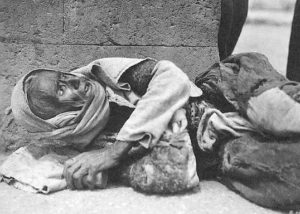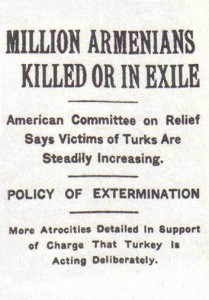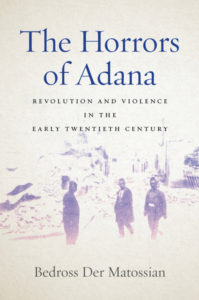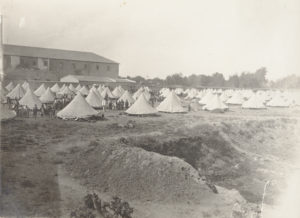Podcast: Play in new window | Download
Radio Documentary – It Was Genocide: Armenian Survivor Stories
Around the world, April 24 marks the observance of the Armenian Genocide. On that day in 1915 the Interior Minister of the Ottoman Empire ordered the arrest and hangings of Armenian intellectuals and community leaders in Constantinople. It was the beginning of a systematic and well-documented plan to eliminate the Armenians, who were Christian, and who had been under Ottoman rule and treated as second class citizens since the 15th century.
The unspeakable and gruesome nature of the killings—beheadings of groups of babies, dismemberments, mass burnings, mass drownings, use of toxic gas, lethal injections of morphine or injections with the blood of typhoid fever patients—render oral histories particularly difficult for survivors of the victims.
Why did this happen? Despite being deemed inferior to Turkish Muslims, the Armenian community had attained a prestigious position in the Ottoman Empire and the central authorities there grew apprehensive of their power and longing for a homeland. The concerted plan of deportation and extermination was effected, in large part, because World War I demanded the involvement and concern of potential allied countries. As the writer Grigoris Balakian wrote, the war provided the Turkish government “their sole opportunity, one unprecedented” to exploit the chaos of war in order to carry out their extermination plan.
As Armenians escaped to several countries, including the United States, a number came to New Britain, Connecticut in 1892 to work in the factories of what was then known as the hardware capital of the world. By 1940 nearly 3,000 Armenians lived there in a tight-knit community.
Pope Frances calls it a duty not to forget “the senseless slaughter” of an estimated one and a half million Armenians by the Ottoman Turks from 1915 to 1923. “Concealing or denying evil is like allowing a wound to keep bleeding without bandaging it,” the Pope said just two weeks before the 100th anniversary of the systematic implementation of a plan to exterminate the Armenian race.
Special thanks to Jennie Garabedian, Arthur Sheverdian, Ruth Swisher, Harry Mazadoorian, and Roxie Maljanian. Produced and written by Heidi Boghosian and Geoff Brady.
—-
Horrors Of Adana by Bedross Der Matossian
In April 1909, a few years before the 1914 Ottoman massacre of Armenians, two massacres killed more than 20,000 Christians, primarily Armenians. They transpired in Adana, situated on the Mediterranean cost of southern Anatolia. Images of the area after the attacks show unprecedented destruction of a formerly prosperous city. Armenian churches, businesses, and homes were destroyed, and the violence quickly spread across the province and extended outside its eastern borders into the province of Aleppo.
Despite the magnitude of these devastating atrocities, no one was held accountable. In fact, they have have remained largely absent from history books. But that’s about to change.
Guest – Bedross Der Matossian has written a meticulously-researched examination of these events. It’s called The Horrors of Adana: Revolution and Violence in the Early Twentieth Century, and it’s published by Stanford University Press. It’s a detailed exploration of the twin massacres and the events and the economic and sociopolitical transformations leading up to them. He is Associate Professor at the University of Nebraska, Lincoln, and the president of the Society for Armenian Studies. He is the author and co-editor of several books including the award-winning book, Shattered Dreams of Revolution: From Liberty to Violence in the Late Ottoman Empire.
——————————-




